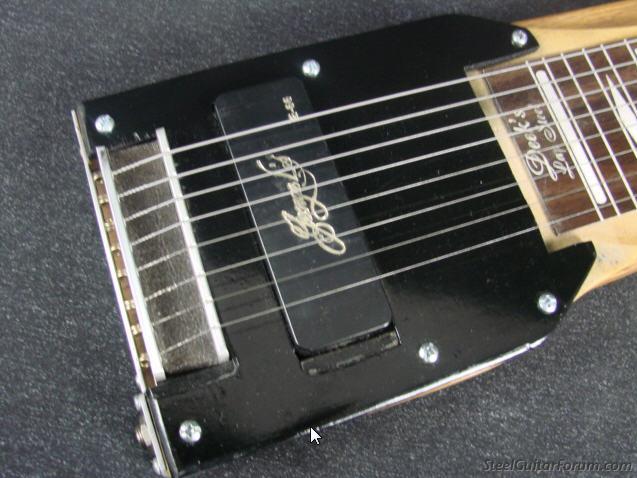http://cgi.ebay.com/ws/eBayISAPI.dll?Vi ... 0720559118



Interesting construction on this- it looks like half of the parts came from the local hardware store. Not that there is anything wrong with that. There are a few tricks that might be worth copying.
Like the bridge. It is U-shaped, but the bridge part is taller than the part with the holes that holds the strings- I wondered where Bob Diederich got that type of U channel. There is a little trick involved: the notched part (the actual bridge) is 1" aluminum angle iron while the part with the holes is 3/4" aluminum angle iron and sits on top of the 1" piece.
The nut was also made from 1" aluminum angle iron and it also serves to support the pieces of wood and aluminum that the Sperzel tuners are mounted on. There is a lot of tension on those pieces of wood and aluminum and they are wedged against the angle iron nut to keep them from moving. The only thing holding those two pieces to the body are 6 woodscrews (~ 10 x 1.25") which by themselves could never handle that amount of tension from the strings. Very clever.
The big question: so what did I think of the sound when I plugged it in? I was very disappointed- the strings were much too close to the pickup and the treble strings were much louder than the bass strings. While it would be good for distorted blues/rock, that was not what I was looking forward to from the George L E-66 pickup (designed to capture the sound of Buddy Emmons's favorite pickup from 1966).
Not to worry- it just needed some minor adjustments. I put small washers under the the two tabs on the bass end of the pickup to balance the sound and larger washers under the bridge to raise it up (which would lower the output). Results: it sounds really great now. I call it my "poor man's Clinesmith"...
Here it is with the handmade case that it came in:

I got worried when I saw that the shipment was only 10 pounds. "Did they forget the case? Or did they forget the lap steel?" Nope, it was all there. A lot of sound for 10 pounds.
Steve Ahola
P.S. There is one drawback. Like some other lap steels the tuners for the 1st and 8th strings are right at the nut, blocking access to the first fret a bit. I think that the lap steel would have to be a little bit longer to really correct that problem. Or maybe get banjo tuners like on the early Gibson Firebirds.


